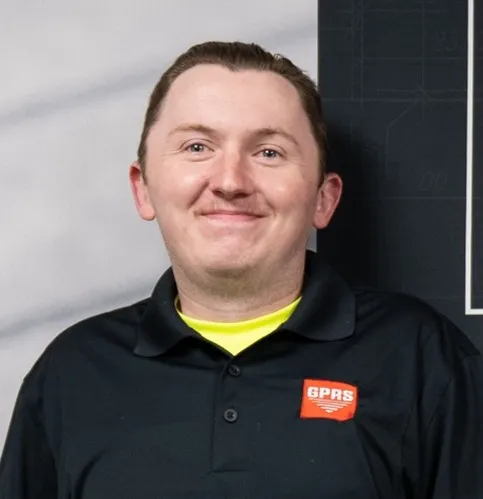GPRS Leak Detection Services saved an apartment complex thousands of dollars in non-revenue water loss and additional maintenance costs.
Haven Apartments in Hobart, Indiana is around 280,000 s.f. and has 300 units. Leaking underground pipes had been plaguing their bottom line for months. GPRS Project Manager Cody Exner was tasked with locating sources of the leaks.

“They were losing hundreds of thousands of gallons of water a day, which was basically what raised the red flag for them and why they initially called us out there,” Exner explained.
The client was exploring other options, such as hiring a plumber, to ensure they resolve this issue. However, hiring a plumber for this issue would have been very costly.
“If the plumbers were called out there, they said they were going to completely take all their underground lines, cut and cap them and run everything overhead,” Exner explained. “This would have cost them tens of thousands of dollars.”
GPRS Leak Detection Services help clients precisely target repairs to avoid the extra time and expenses related to pipe excavation. Exner used an acoustic leak detector to locate the source of the leaks. Acoustic leak detectors locate leaks with a sensitive ground microphone or an acoustic listening device. The device is either used at the surface level, or is dropped into a manhole, and the Leak Detection Project Manager uses headphones to listen to and isolate the leak tone.

GPRS Project Managers can also use leak detection correlators, also known as leak noise correlators, to pinpoint leaks. They use sensors placed on both sides of a pipe that send information back through radio waves. The processing unit compares the data with algorithms designed for certain noise profiles, which determines the exact location of any leaks.
The biggest benefit of utilizing acoustic leak detection and leak detection correlators is that it’s non-destructive. Other methods, such as potholing, involve excavating areas to check the conditions of underground pipes. Acoustic leak detection is quicker to perform and avoids the need for repairs or replacements of damaged ground and structures afterward.
“When I first started the project, I listened to one of the apartment complexes that they knew was 100% fine based on the data that they had, so I get a base tone and figure out what their pipes sound like,” Exner explained. “Based on my initial listening, I was able to determine that they had leaks in the different units.”
A trained ear is vital when identifying the location of underground leaks. Factors like how the pipe was constructed, the depth of the pipe below ground, and the severity of the leak can all impact what they are hearing. Expertly trained leak detection specialists with field experience, like Exner, will be able to listen to the pipes and discover the exact location of the leaks.
“After investigating using the acoustic leak detector, we then were able to determine that a couple of the apartment complexes had service leaks right at the meter where it goes into the building,” Exner explained. “They were able to put a different meter on it.”
After the new meter was installed, Exner checked with the client to ensure everything was working as it should.
“I touched base with them a couple of weeks ago and they said they're running back to normal and not seeing any more excessive usage or problems,” Exner explained. “So, they're back to the amount that they were initially spending on the unit.”
From leaking underground pipes to buildings that pierce the sky, GPRS can visualize YOUR built world to show you what you need to see when you need to see it.
What can we help you visualize?
FREQUENTLY ASKED QUESTIONS
How many miles of pipe can GPRS test in one day?
Our Project Managers can test up to 10 miles of pipe a day on a metallic system (cast iron/ductile) and a contact point (hydrant/valve) per minute.
Why don’t I see any water at the location where you’ve pinpointed the leak?
Water finds the path of least resistance. Water can run through cracks in subsurface rock or make its way into storm, sanitary, and conduit piping. If the subsurface contains a high volume of sand, it will naturally flow farther down. There is no water visible on the surface in more than 99% of the leaks we locate.



.svg)